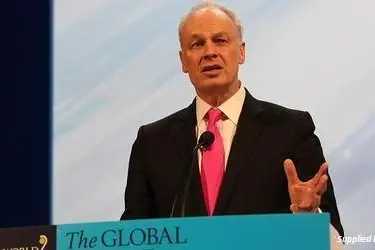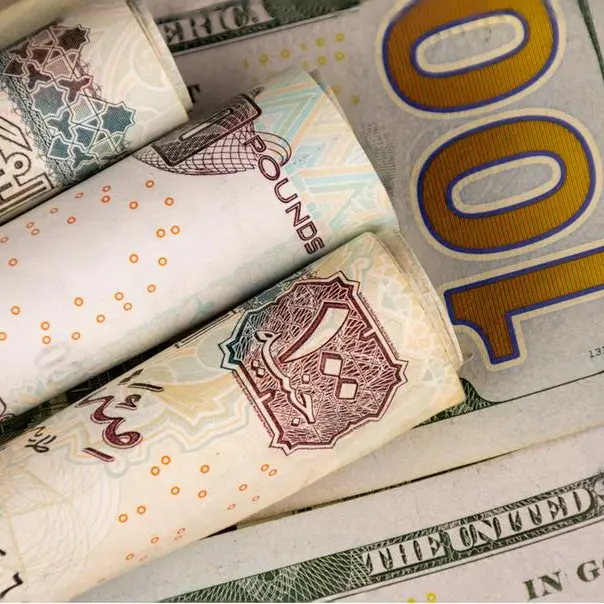PHOTO
A long-debated unified tourist visa for the six Gulf Cooperation Council (GCC) states, similar to Europe's Schengen visa system, should be prioritised by regional governments to lure international travellers despite increased security concerns, according to a global travel industry executive.
A unified visa would enable tourists and expatriates living in the GCC to be able to move freely between any of the six member states -- the United Arab Emirates (UAE), Saudi Arabia, Kuwait, Qatar, Oman and Bahrain - mirroring the Schengen Agreement in Europe and visa developments in the Association of Southeast Asian Nations (ASEAN).
GCC nationals, who account for 51.9 percent of the region's 50.3 million population, can already move between borders without the need for a visa. The remaining 48.1 percent, which equates to 24.2 million people, are resident expatriates, who need an entry visa for each country.
David Scowsill, president and chief executive officer of the World Travel and Tourism Council (WTTC), said a unified GCC visa should be "very high up the political agenda".
"If you create a common visa zone for people who live in the GCC countries it has a huge, huge positive impact on job creation and economic development," Scowsill told Zawya on the sidelines of the Arabian Hotel Investment Conference in Dubai last week.
Scowsill recommended following the example of the Schengen Agreement, which enables the free and unrestricted movement of people, goods, services and capital within 26 European member nations which are home to around 400 million people.
"The Schengen countries [agreement] was the first big example of this and the growth that created was enormous," he said. "The growth of the low cost airlines like EasyJet and Ryanair connecting all these provincial cities in Europe would never have happened if they hadn't moved towards open skies and a common visa for people coming into the Schengen territory."
In the GCC, the issue has been publicly raised by various tourism boards in the media since 2007, including by the Dubai Department of Tourism and Commerce Marketing. The proposal was also on the official agenda at a meeting of GCC tourism ministers in Oman in October last year.
One step has been taken in the region; the introduction of a multiple-entry visa system for cruise tourists in the UAE, launched in August last year, and expected to boost ship calls by 16 percent and passenger numbers by 7 percent in the current season.
Currently, travel and tourism contributes 8.7 percent of gross domestic product (GDP) in the UAE and supports over half a million jobs, or 9 percent of total employment. It contributes over 27 billion UAE dirhams ($7.35 billion) in investment and 95 billion dirhams of foreign visitor earnings.
"Over the next decade our research anticipates that our sector will grow in the UAE by 5.4 percent every year until it reaches 11.2 percent of GDP in 2026. By which time 850,000 jobs will be sustained by our sector," Scowsill said.
This forecast is dramatically above the global average growth of the travel and tourism industry. It is based on the status quo, so does not account for a unified GCC visa. Should this be introduced, it would likely increase the forecast upwards.
Security fears
The main challenge to the introduction of new visa strategies has been the impact of the recent surge in militant attacks, like those that targeted the main airport in Brussels earlier this year, which have spurred many countries to strengthen security measures and border control.
The Middle East has seen increasing turmoil with several wars in the region and the rise of militant group Islamic State, which claimed responsibility for the Brussels attack.
Scowsill said he believed this desire to "close the doors and to build walls" is the biggest threat to the continued growth of the travel and tourism sector. "We cannot go backwards. In fact, I believe that the greatest challenge we face is an over-reaction from governments who wish to close borders, build walls, and start saying 'no', not 'yes' to those who wish to visit their country."
"This is a global problem with a global solution which will involve an increased level of data sharing and technological advancements in the form of biometrics. It will require unprecedented international cooperation. The message is clear though: It is up to us to lead the debate - to be part of the solution," he added.
The WTTC is a non-profit, non-government organisation based in London, which was set up in 1990 to raise awareness of global issues facing the travel and tourism sector.
Globally, travel and tourism generates nearly 10 percent of global GDP, amounting to $800 billion of investment and 284 million jobs, according to data from the WTTC.
"Within 10 years we will contribute 11 percent of global GDP, and one in 10 of all jobs. By 2035 over two billion people will cross international borders each year," said Scowsill.
Global integration
Other continents are now progressing towards the Schengen scenario, according to Scowsill, who cited new visa rules in the 10 ASEAN countries, which allow residents to travel visa-free internally and will be extended to include tourist visas in the next phase.
Discussions are also underway to develop unified visas in some countries in Latin America, via the Pacific Alliance, and in parts of Africa.
Despite the positive growth forecast, Scowsill said there were other big barriers to achieving this: government policies, including tax regimes, infrastructure planning and execution, and the recruitment and training of people; environmental and socio-economic sustainability; and freedom to travel, which centres on visa processes.
"Still too many countries require a paper visa for people to enter the country. Sixty-three percent of international travellers still need to fill in paper forms, queue at consular offices and get a stamp in their passport," Scowsill said.
In his view, the best thing to do is not to have a visa at all, noting the "massive explosion of movement" between Turkey and Russia before Russian President Vladimir Putin stopped the visa-free travel recently due to political tension between the two countries.
The second option would be to introduce an electronic visa, visa waiver or trusted traveller programme. A great example is the Electronic System for Travel Authorization programme in the United States, which charges travellers $14 for a two-year visa waiver, $10 of which goes into a marketing fund for brand USA.
© Zawya 2016























